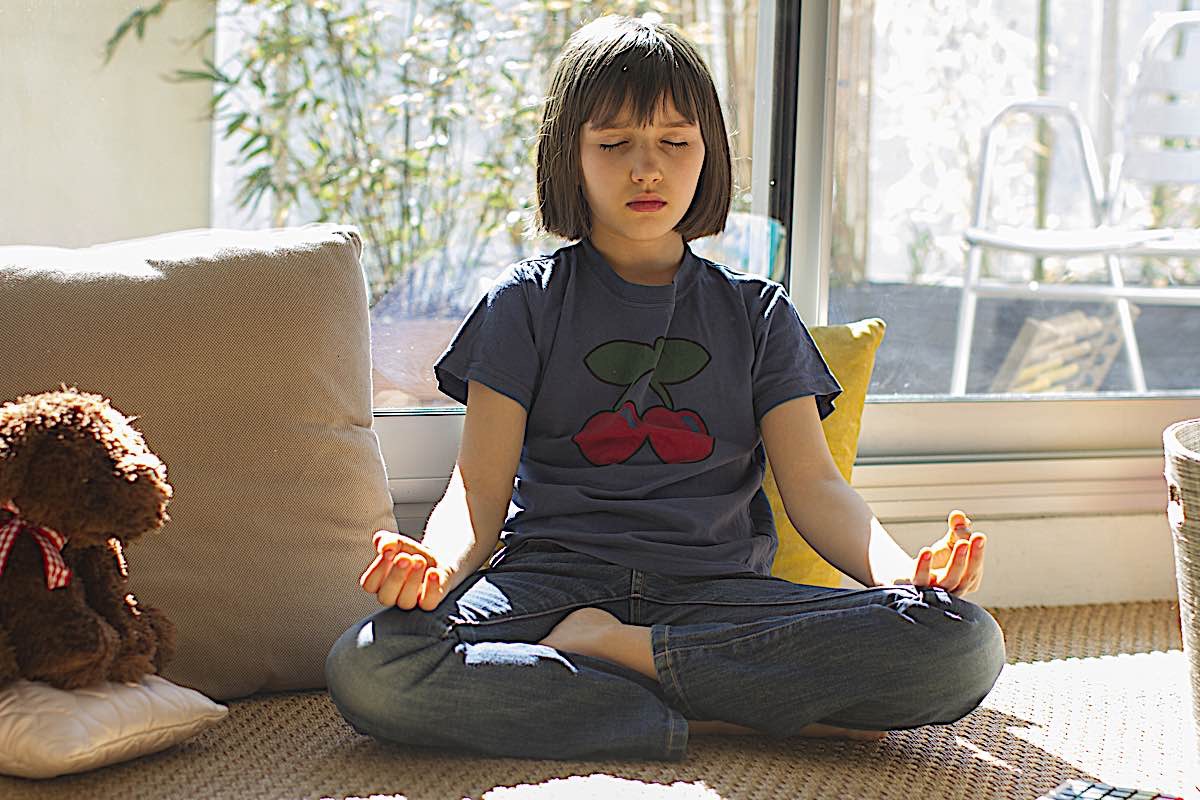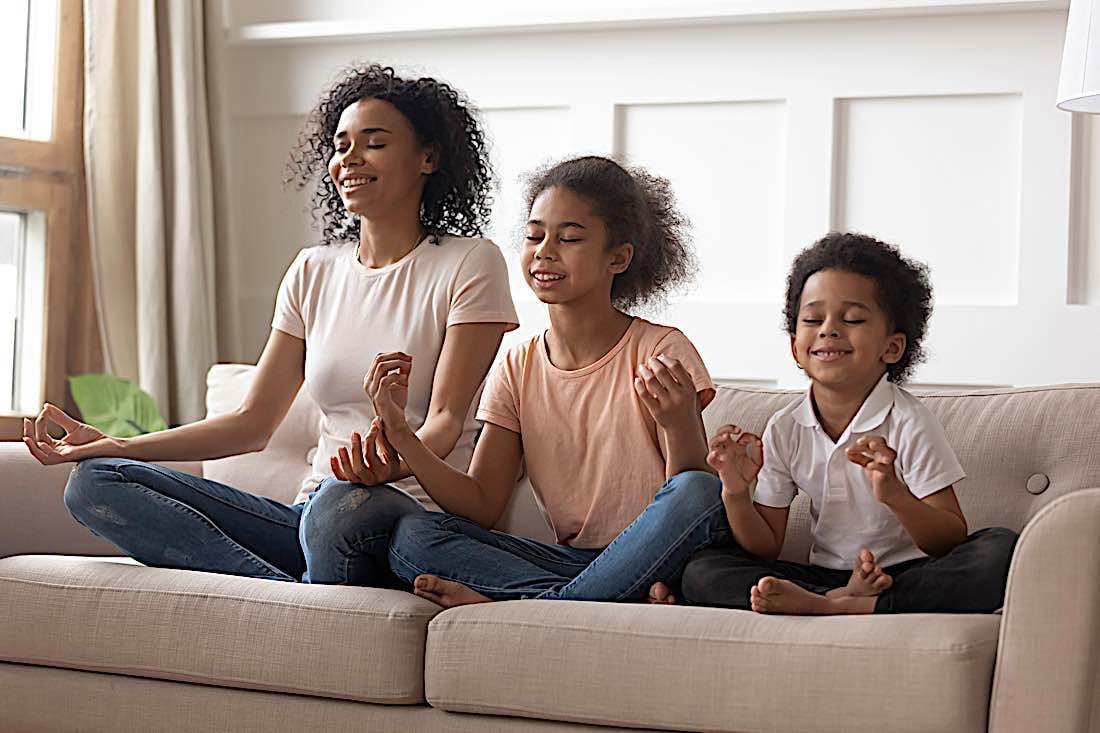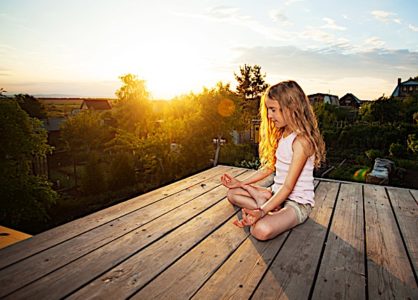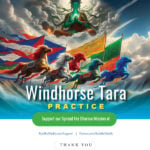Tips for Teaching Children Mindfulness and Meditation — ideal practice during lock down
Mindfulness meditation and yoga are ideal practices for our current “Covid-19 lockdown” situation — or any time. Many people all over the world are aware of the benefits of mindfulness, meditation and yoga. What better time to practice health and mindfulness with your children than now? Families in “lockdown” are under stress — and mindfulness is a well-proven “remedy” for stress.
By Molly Crocket
Biography at the bottom.
The benefits of mindfulness are well documented; studies have illustrated that as little as a few minutes of meditation a day can increase our attention span and ability to concentrate, increase empathy, regulate our emotions and reduce stress. Many studies have also shown the link between mindfulness and reduced mental illnesses like anxiety, depression, and ADHD.

So, imagine what could be gained by beginning to meditate from an early age?
Giving children the tools to help them combat negative thought patterns, become more confident and aware of their emotions is very important. It’s a gift they will carry into their lives, helping them to become more well-rounded, empathic people.
In one study in Ohio, children who practiced mindfulness in school saw a decrease in bullying. Another study in San Francisco saw a huge improvement in overall academic performance, and one middle school saw a 45% decrease in suspension rates and fighting. Can all of this really be achieved by integrating some meditation and ‘quiet time’ into children’s days? Yes!
Here are some ways you can introduce mindfulness to children – whether you are a parent, teacher, or caregiver.

Lotus Breath
Meditation can initially be boring for children – so it’s great to incorporate games into the mindfulness activities. Get kids to form a lotus flower by touching their pinkies and thumbs together, then ask them to take a deep breath and imagine what the flower would smell like. Ask them to imagine how they’d feel if they were smelling it, what the flower feels like, and what color it is. You can then move on to asking them about their day – the overall purpose is to have children start to speak about their emotions and feelings.

The Balloon
This is a fun and simple guided meditation for children. It can be done either standing or seated, and you ask the children to relax their bodies and take in deep inhales and slow exhales. You ask them to imagine they are blowing up a balloon: to take in a slow, deep breath and fill their belly with as much air as possible. Let the air out of the belly (or balloon) through the nose. Encourage the kids to feel their whole body relax, and they can also make a hissing noise when they exhale ‘like letting air out of the balloon!’
With younger children, you might want to have some visualization of the balloon itself: ask them to choose its color and keep the image of the balloon in their mind as they breathe.

Bear Breath
Once balloon breath is taught, the bear breath can be the next mindfulness practice. This involves breathing in through the nose for 4 counts, holding the breath for 4 counts, and slowly releasing the breath for 4 counts. This is a Buddhist practice that centers on the breath – increasing concentration and calming thoughts in the mind. By breathing slowly, deeply, and only focussing on the breath, the body is ‘tricked’ into believing it is more relaxed – so a great exercise for stress, too!
Guided Visualisations
This one involves slightly more knowledge on the part of the teacher. You might want to look for recordings if you are not confident in teaching meditation and visualization.
One common visualization is the body scan. It’s usually practiced lying down, and the guided meditation takes children through their whole body, from top to toe, letting them feel any areas that are sore or tense. Through breathing into these areas, they release any negative emotions and tension in these places.
Step-by-step guide
- Lie down comfortably and close your eyes.
- Take a few deep breaths.
- Bring all your attention to your right foot, noticing how it feels.
- Squeeze the right foot, making a fist with your whole foot and all five toes.
- Hold this tension for two breaths and then release all the tension, relaxing it completely.
- Take a deep breath, and move onto your left foot…
- Follow the same instructions, moving up your body, squeezing one part at a time, and then releasing the tension.
1 thought on “Tips for Teaching Children Mindfulness and Meditation — ideal practice during lock down”
Leave a Comment
More articles by this author
Search
Latest Features
Please support the "Spread the Dharma" mission as one of our heroic Dharma Supporting Members, or with a one-time donation.
Please Help Support the “Spread the Dharma” Mission!

Be a part of the noble mission as a supporting member or a patron, or a volunteer contributor of content.
The power of Dharma to help sentient beings, in part, lies in ensuring access to Buddha’s precious Dharma — the mission of Buddha Weekly. We can’t do it without you!
A non-profit association since 2007, Buddha Weekly published many feature articles, videos, and, podcasts. Please consider supporting the mission to preserve and “Spread the Dharma." Your support as either a patron or a supporting member helps defray the high costs of producing quality Dharma content. Thank you! Learn more here, or become one of our super karma heroes on Patreon.
Molly Crocket
Author | Buddha Weekly
Molly Crockett, a lifestyle writer for Australianreviewer and Ukwritings, shares her inspiration and lifestyle tips with her audience. In her spare time, Molly teaches arts and writing skills for Topcanadianwriters.














This global Coronavirus Pandemic shutdown presents a great opportunity to not only teach children mindfulness, and meditation, but to practice meditation and mindfulness ourselves.
Meditation will aid us in relieving stress and anxiety, and allow us to achieve inner peace.
Stay healthy everyone.
Greg